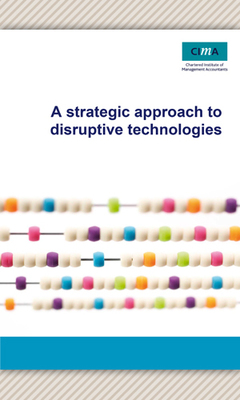Strategic approach to disruptive technologies 
This report details how to craft strategies to best exploit opportunities ahead of the competition. Harvard professor Clay Christensen coined the term disruptive technology, which he later renamed disruptive innovation. He identified that it was not the technology itself which was disruptive, but its impact on strategy or business models. Christensen’s theory developed the previous body of literature about discontinuity of organisational change. In summary:
- A disruptive technology emerges. Initially it cannot match the performance of the existing dominant technology, on the factors which customers traditionally value.
- The distinctive features of the disruptive technology are valued by a small fringe segment of customers, and increasing numbers of new customers. It is also typically cheaper, simpler, smaller or more convenient.
- Incumbent players in the market conclude that investment in the disruptive technology is irrational, since their most profitable customers don’t want and can’t envisage using new products based on the new technology. New entrants to the market who exploit the disruptive technology concentrate on fringe or emerging markets.
- The disruptive innovation develops so that new products meet the standards of performance expected by the bulk of the market; the new technology displaces the previous one and thus the new entrants to the market displace the incumbents.
(PDF 115KB)
- Management accounting: Business: Strategy, Advanced

Flash Player 9.0.0 or above






Comments/Reflections